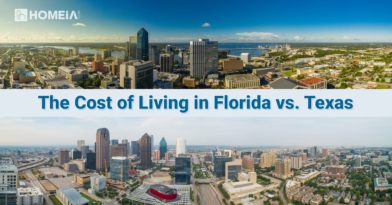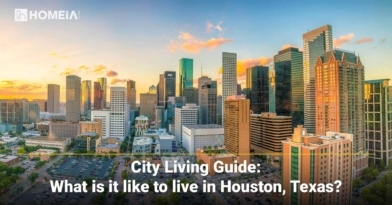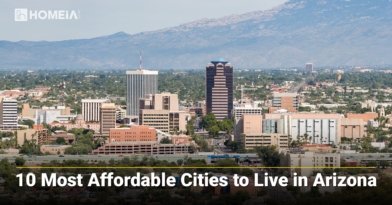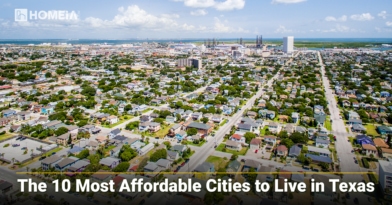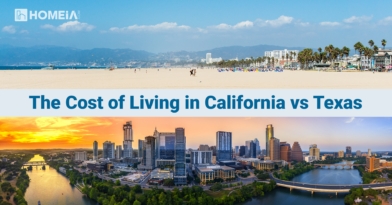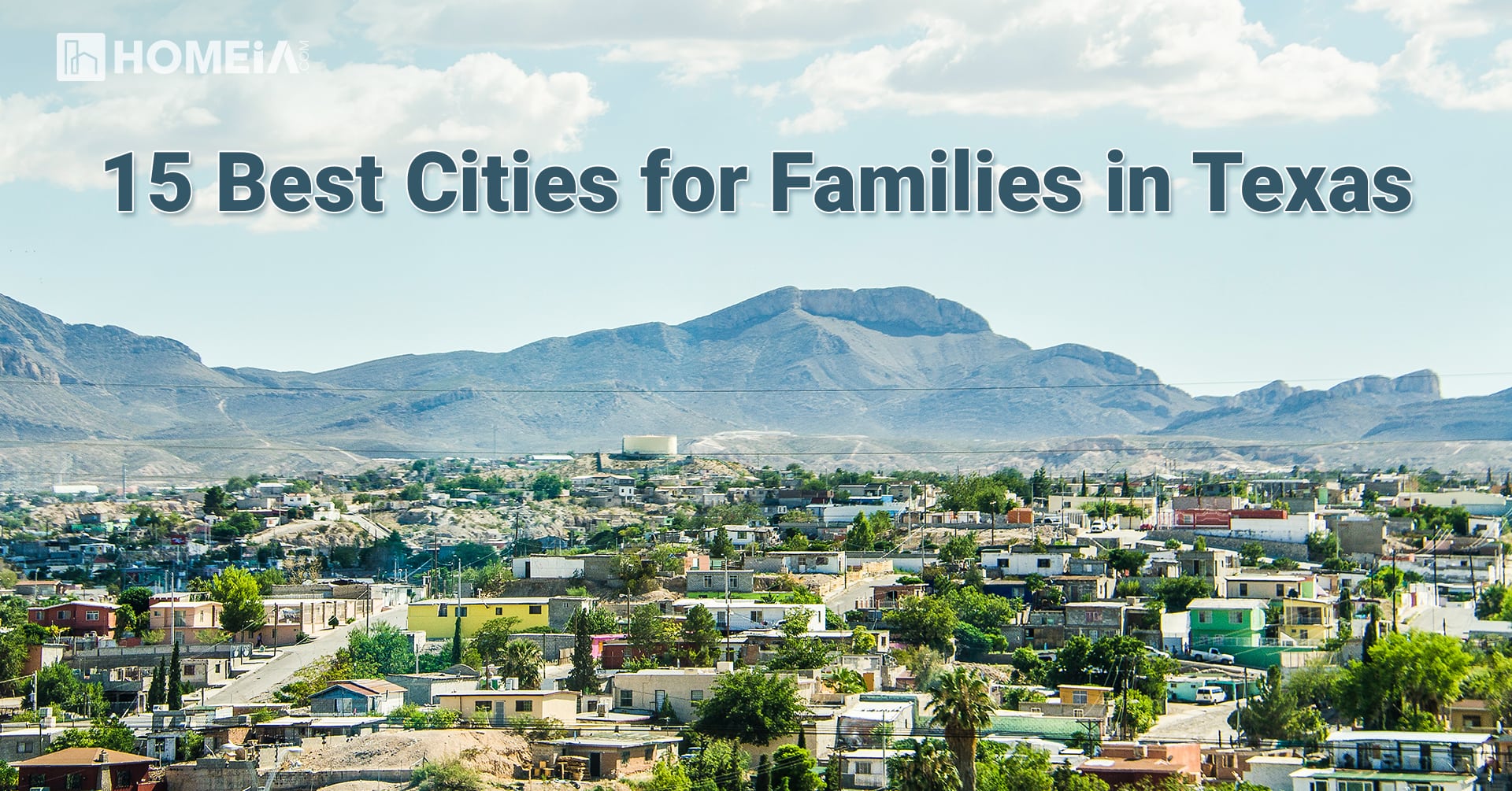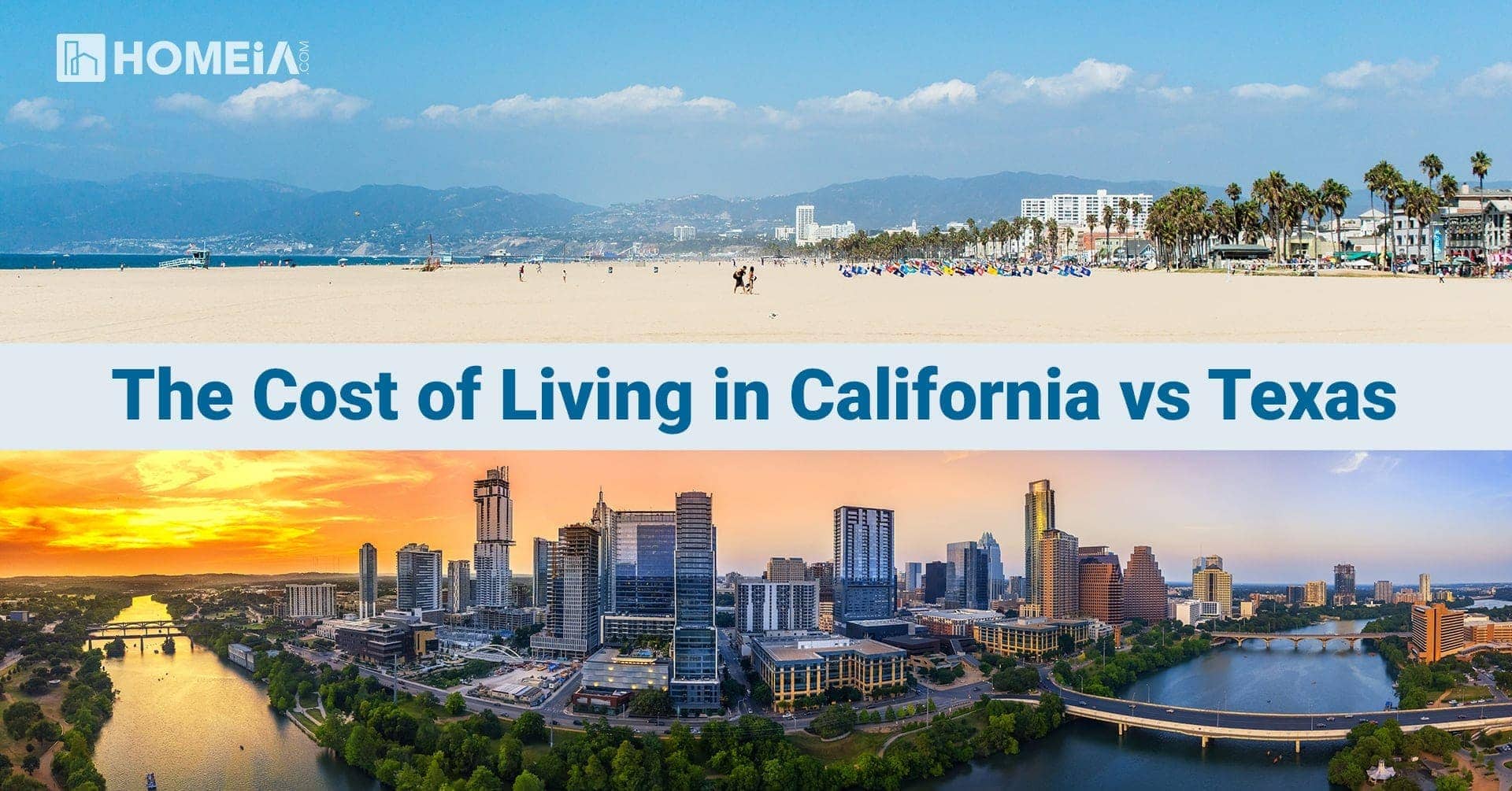10 Best Places to Live in Hawaii in 2024
- Author:by The HOMEiA Team
- Category: City Living Guide
Most Americans know Hawaii as a beautiful vacation spot and not much more. But the island state has 1.4 permanent residents and an entire independent lifestyle and ecosystem. Hawaii is unique in its culture. It was an independent kingdom run by a royal family until the mid-1800s, and much of that culture survives today. It is woven into the traditions and heritage of the state.
Hawaii’s violent crime rate is lower than the average for the country, making it a safe place to raise a family. While being so far removed from the rest of the world naturally makes the cost of living higher than all other states, those who have taken the plunge to move here seldom regret it. Hawaii is consistently ranked number one among all states in happiness.
The state consists of six major islands, two of which are unsuitable for moving or living, especially with an entire family. For instance, Kahoolawe is a small island with no permanent residents that is only used for native Hawaiian spiritual and cultural purposes. Moloka’i is another smaller island that, while beautiful to visit, may not work for families coming in from the mainland due to cultural or logistic issues.
Therefore, when it comes to moving, Maui, Oahu, Hawaii, and Kauai are the main options. Using them as a starting point, here are the 10 best places for families to live in Hawaii.
Table of Contents:
1. Wailuku – Maui
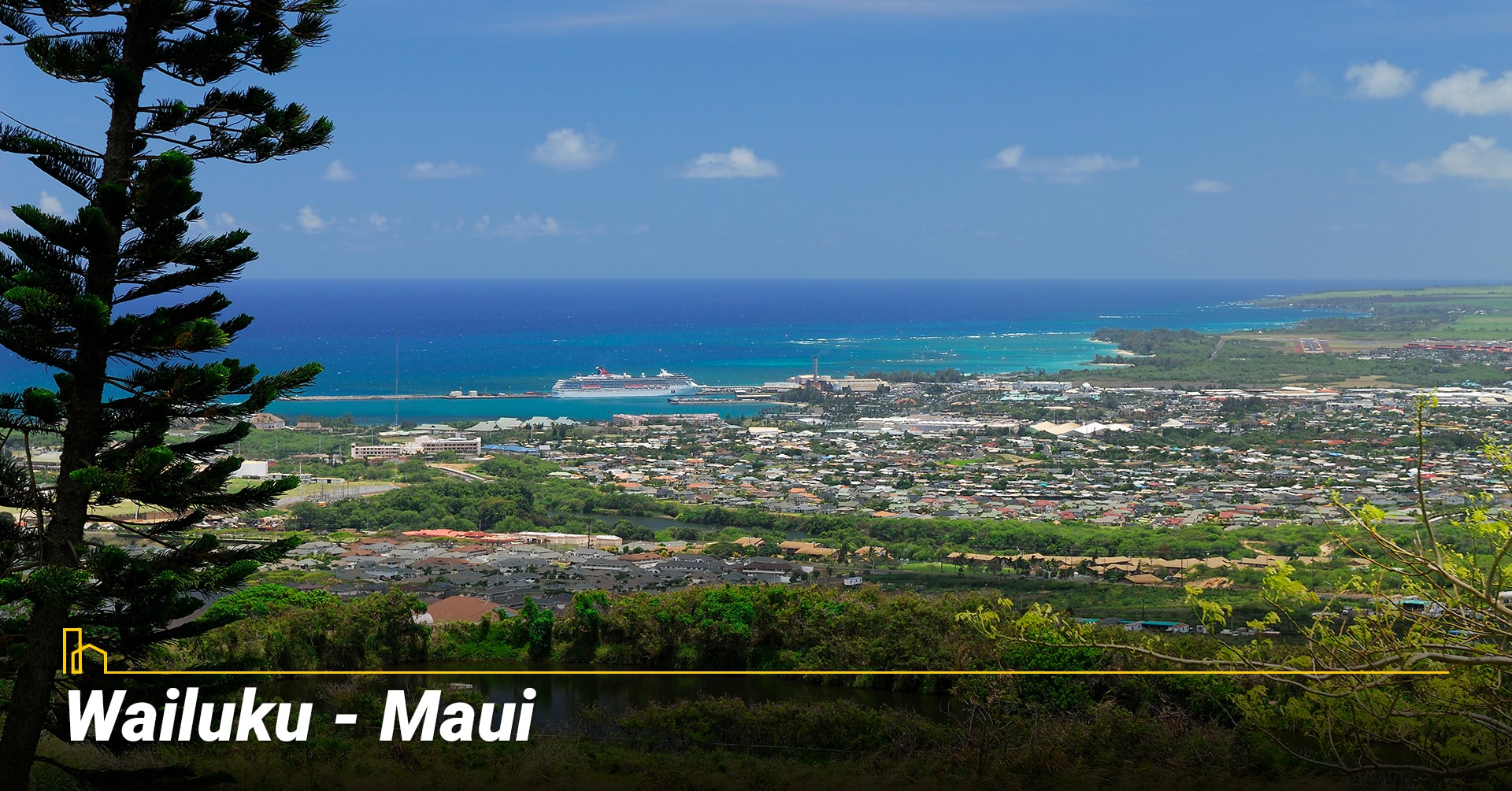
- Population: 23,794
- Median Household Income: $104,848
- Median Home Value: $711,900
Wailuku is a city in the northwestern part of the island of Maui and is home to 23,794. It was Maui’s most popular tourist destination in the early half of the 20th century before many of the island’s resort towns rose. Hence, it carries the distinction of a rich local history and a melting pot of culture.
Families will love Wailuku for its safety. The violent crime rate here is far lower than the national average and 40% lower across all Hawaiian islands. The amenities here can’t be beaten. Locals have their pick when it comes to places like cafes, restaurants, boutique stores, and even healthcare centers. All this benefit does come at a cost, however. The median home price in Wailuku is $711,900, and the cost of living is 59% more than the national average. That’s a cost that families should consider before choosing this town.
There is a lot to do in Wailuku, which is known as a community of artists and performers. There is always a show to catch or a public art installation to view. The arts district is the place to go, check out the local culture, and eat some of the renowned cuisines. There’s plenty of local pride in the quaintness of the downtown area.
The 22 Best Things to do in Waikiki
One of Hawaii’s best destinations is the neighborhood of Waikiki, a southeastern extension of the capital, Honolulu. Located on the picturesque island of Oahu, it’s a place with a lot to do, from sparkling beaches to fine dining to cultural and educational experiences…
2. Mililani Town – Oahu

- Population: 27,423
- Median Household Income: $119,502
- Median Home Value: $846,100
Located directly in the center of the island of Oahu, Mililani Town is distinguishable from its neighbor Mililani Mauka by its higher-rated quality of life. The town of 27,423 has good schools, job opportunities, and great amenities. All of it is overseen and maintained by a unique town association whose mission is to maintain public areas and high quality of life for all the residents.
Crime is low in Mililani Town, overall coming in 3% lower than the rest of the state. Home costs are expensive, however. The median home is priced at $846,100 for this area, which is high even for Hawaii. The overall cost of living is on par with the rest of the islands: high but not shocking. The neighborhoods are friendly here too. Mililani Town is the third wealthiest zip code in the entire state.
Being located in central Oahu has its perks. The city is known for its quality of shopping. The downtown area has all kinds of independently owned restaurants and the more familiar American chain businesses. Golfers will love the Mililani Golf Club, a great course and popular restaurant.
The Cost of Living in Florida vs. Texas
Texas and Florida are vast and have hundreds of communities to choose from. But what are the pros and cons of living in each state? Come with HOMEiA as we explore 7 crucial factors that reveal the true costs of choosing Florida or Texas as your new home…
3. Wailua Homesteads – Kauai
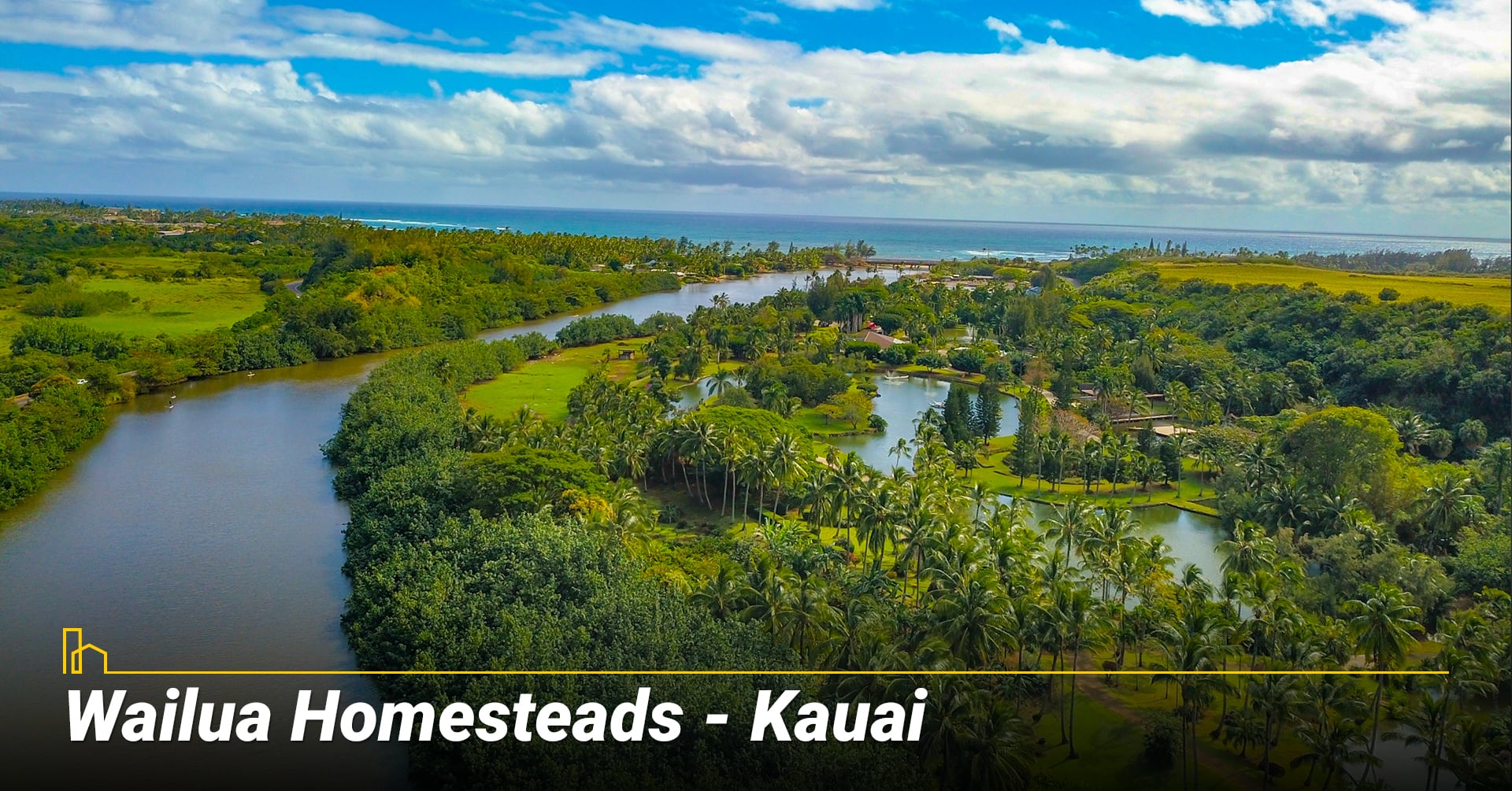
- Population: 7,189
- Median Household Income: $113,306
- Median Home Value: $835,200
The eastern side of Kauai is beautiful, and Wailua Homesteads is a town that can make families very happy. It’s a small town of just 7,189, so people who enjoy feeling like they live in a smaller community will want to give Wailua Homesteads a closer look.
A significant benefit of this area is the extremely low crime. Overall, crime rates are 22% lower than the Hawaii average, making this a safe spot to raise children in a worry-free environment. Like all of the places on our list, real estate is expensive. In Wailua Homesteads, a house costs an average of $835,200.
The biggest draw of this neighborhood is the emphasis on the beauty of the island itself. The drive up the hill from Wailua proper leads to an area with fantastic views dotted with residential homes of all sizes. The area doesn’t have a lot of city amenities, but there is a corner store, and it does feature some of the best hiking trails in the state. The island’s Kauai Hindu Monastery is also located here. Anyone is welcome for a morning of meditation and spiritual healing.
12 Key Factors to Know About Living in Houston
Houston, Texas is a vibrant city with much to offer. U.S. News & World Report ranks Houston #30 in its Best Places to Live assessment and #26 in Best Places to Retire. There’s much to love about this southern city, nicknamed Space City in the days of the NASA Manned Spacecraft Center…
4. Holualoa – Hawaii
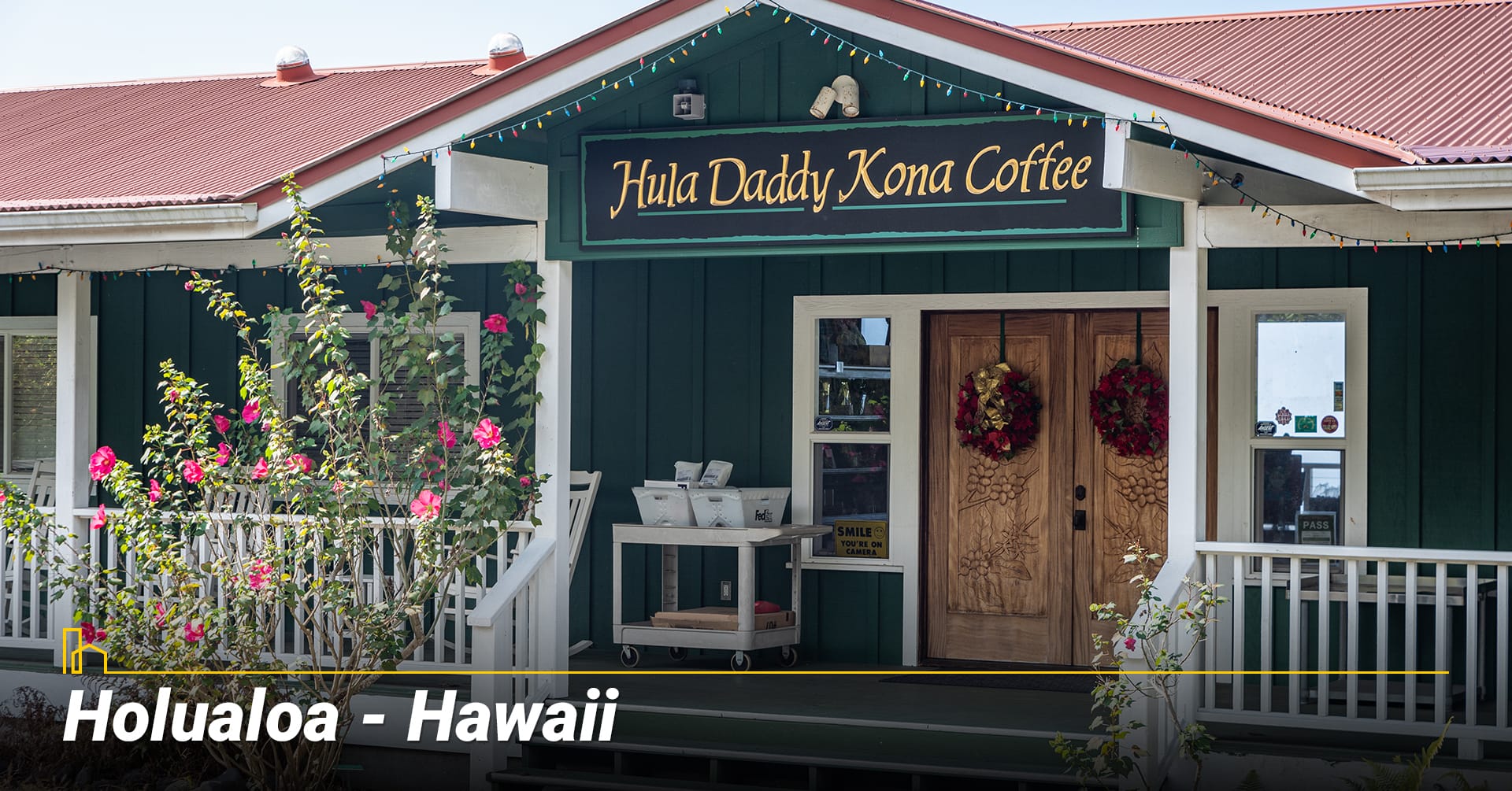
- Population: 3,083
- Median Household Income: $90,385
- Median Home Value: $1,074,600
This village of just over 3,083 people is next to Wailua-Kona, which people may recognize from drinking the famous coffee grown here. Holualoa is our pick for the western side of the big island of Hawaii due to the peaceful nature of the downtown area and the proximity to the big island’s major volcanoes. In fact, the town itself is named after the ancient activity of careening down the volcano on a sled made of wood.
Crime rates here are 7% lower than the state average, and real estate prices are 13% lower, making this a safe and slightly more affordable option for families to settle down. A home here will cost under $1,074,600. However, rental costs are higher than in the rest of the state.
If your family is settling in this area, the most popular thing to do is immerse yourself in the coffee culture. Tours are available at the Kona Coffee plant, and cafes are along the town’s main drag. There is also a bustling arts scene. Going through Holualoa, you can check out some great art galleries, including one dedicated entirely to ukuleles.
The 10 Most Affordable Places to Live in California in 2024
We assessed the cost of living across Californian cities and compared them to the national average. The cost of living is calculated based on 5 main categories: housing, food, healthcare, transportation and energy. Based on these calculations, we narrowed down the list to California’s 10 most affordable cities…
5. Urban Honolulu
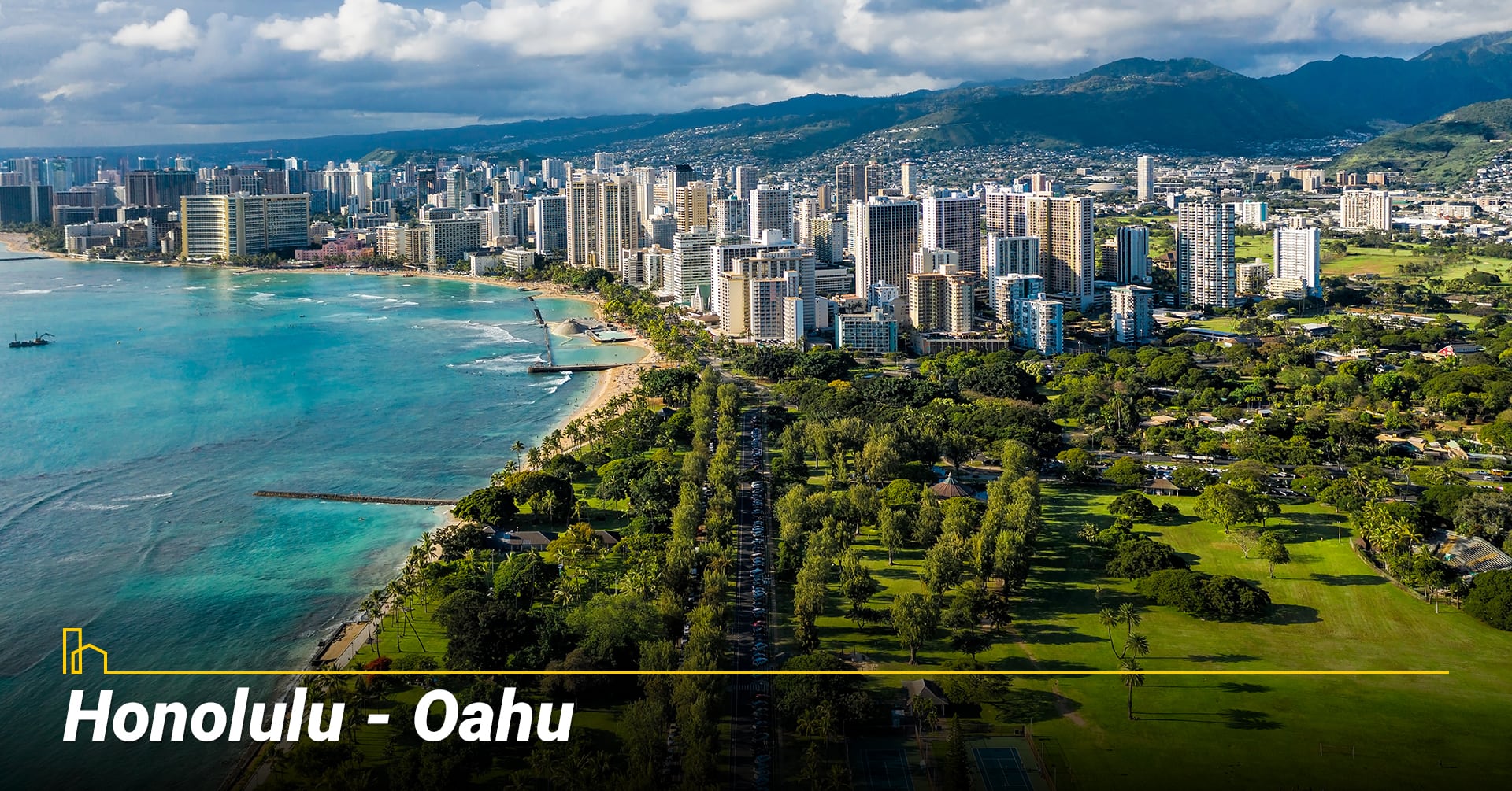
- Population: 343,437
- Median Household Income: $82,006
- Median Home Value: $818,700
There’s something to say about urban living, even in a Pacific tropical paradise. Honolulu is a perfect fit for families who are used to living in more densely populated areas and want to experience the most exciting social aspects of living in the Hawaiian Islands. The population of Honolulu is 343,437, making it Hawaii’s largest city by far, and it serves as the central hub to the rest of the country and the world.
As far as urban centers go, Honolulu is relatively safe. It has a crime rate nearly 5 points lower than the rest of the United States and has a meager crime rate for a city of its size. Buying a home in Honolulu may be within reach for many families, at least compared with some of Hawaii’s smaller towns and beachside places. The median average home costs $818,700 .
Vacationers already know about all the amenities Honolulu has to offer. The shopping, dining, and culture are all top-notch. It also gives its residents a lot to be proud of. Healthcare is available and abundant, there are several public and private schools from which to choose, and the city boasts one of the best public transit systems in the world. Overall, families could do worse than choosing Honolulu as their home.
The 10 Most Affordable Places to Live in Arizona
Arizona is world-renowned for its dramatic beauty, a combination of rugged mountains and vast desert landscapes. The sixth-largest state by area and the 14th largest in terms of population, Arizona is indeed beautiful–but it’s much, much more than that…
6. Haiku-Pauwela – Maui
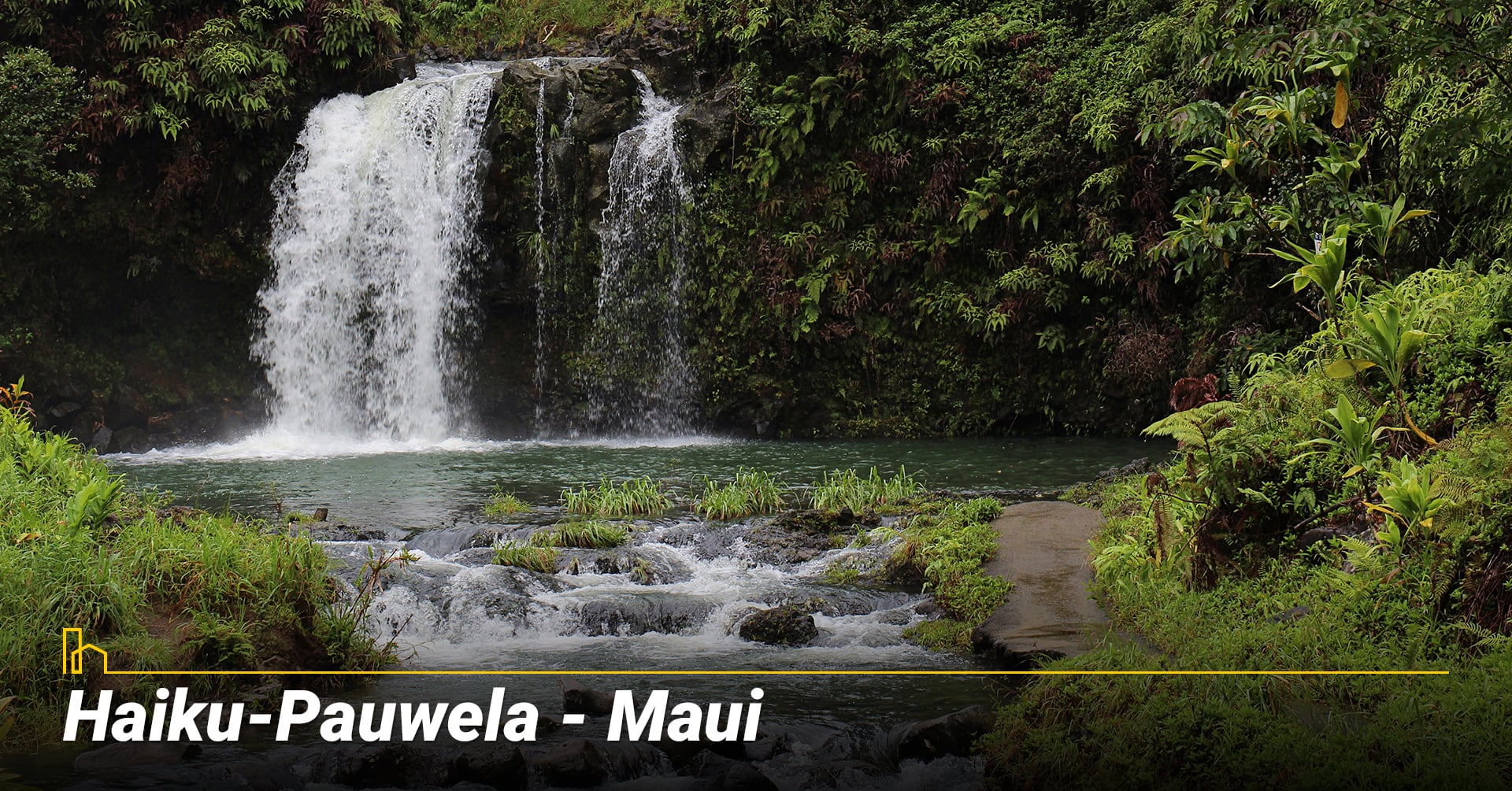
- Population: 9,245
- Median Household Income: $94,495
- Median Home Value: $912,300
With a population of around 9,245, Haiku-Pauwela offers a friendly, quiet lifestyle on the island of Maui. Not only is it the ideal place to settle on the island’s north shore, but the community also sticks together here for all who want to feel included and part of something.
Haiku-Pauwela is very safe, with overall crime rates 44% lower than the state’s average. However, it has a higher cost of living than the rest of the islands, and median homes cost around $912,300. It is cheaper than average to rent a home here for families who may want to choose that option.
Plenty of seaside restaurants are available in Haiku-Pauwela, giving families options for dining. Still, this area is perfect for lovers of the outdoors. Haiku itself features many different trails for biking or hiking. One of the biggest visitor attractions to Maui is the zipline tour, taking guests above the beautiful landscape and showing them stunning ocean views while zipping through the air.
One of the staples for the citizens is the Pauwela store, a local business providing groceries and other goods to the community. The family-owned store is involved with the community and treats everyone as family.
The 10 Cheapest Places to Live in Texas
They say everything is bigger in Texas, and for good reason. From some of America’s largest and active metropolitan cities to the host of recreational activities for people of all ages across the state to the many bigger-than-life personalities who call Texas home, Texas has plenty to offer for everyone. here’s the list of 10 lowest cost of living places…
7. Maunawili – Oahu
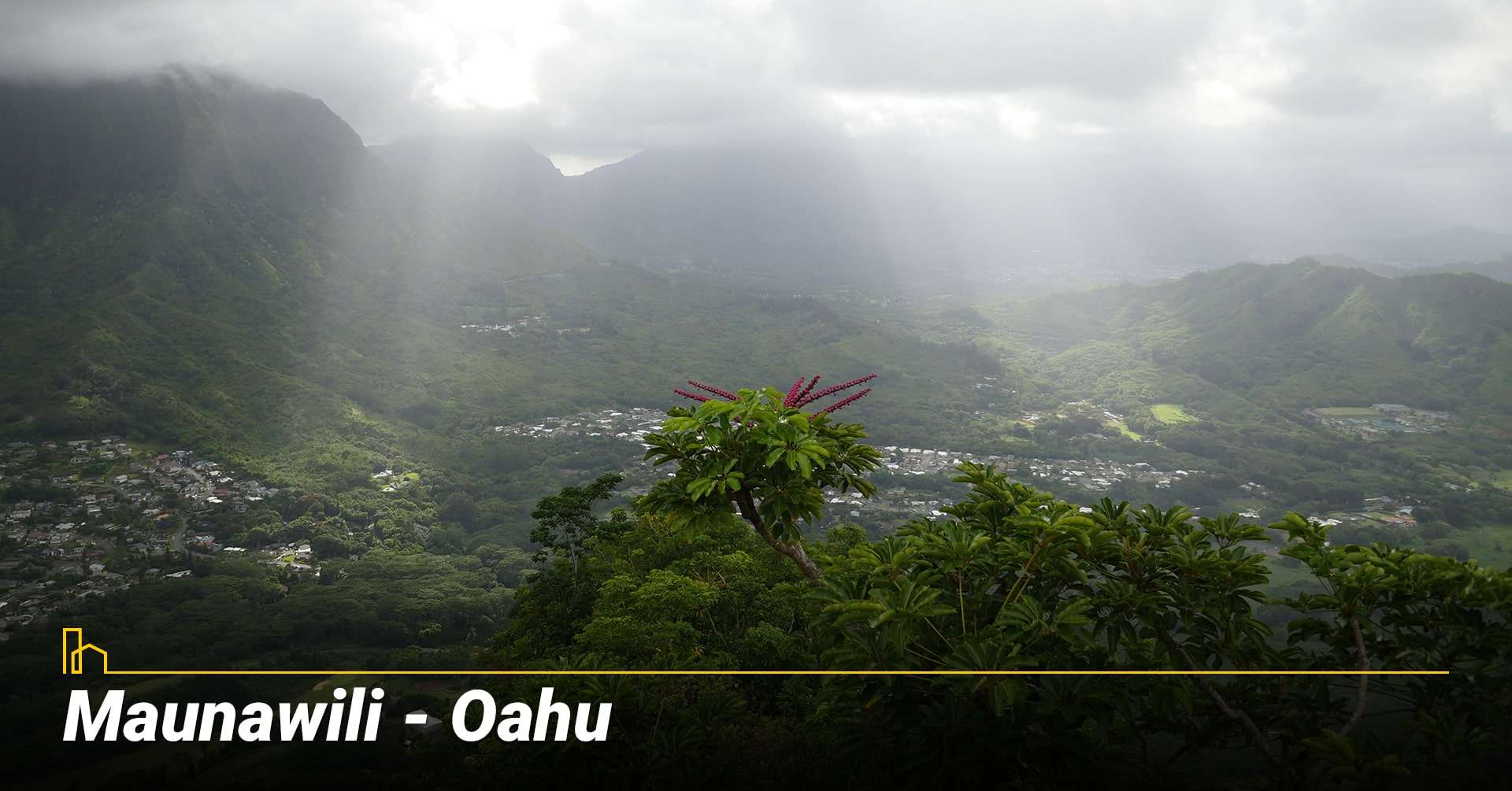
- Population: 2,067
- Median Household Income: $169,375
- Median Home Value: $1,285,800
Maunawili is a tiny town located on southeast Oahu and northeast of the central hub of Honolulu. Fewer than 2,067 people call this area home. Still, it’s one of the ideal places to raise a family in all of Hawaii, even on the highly desirable island of Oahu.
Maunawili gets a supremely high ranking for safety. Its crime rates are a whopping 84% lower than Hawaii’s average. There is virtually no reason to worry about crime in this town. The schools are also incredible. Almost 96% more of Maunawili’s students go on to earn a bachelor’s degree or higher when compared with the averages of the rest of the United States.
For a family with children, there’s no better place on the island for education. All of these eye-popping stats come at a cost. The cost of living in Maunawili is very high, and the median home will cost a steep $1.28 million.
Being on such a famous vacation island, Maunawili has no shortage of things to do. There are many tours offered to tourists that locals can also enjoy, particularly the ones that explore the lesser-known areas of Oahu. While there aren’t any commercial businesses in town, plenty exist just a short drive away.
15 Best Cities for Families in Texas
There are many employment opportunities throughout the state and many enjoyable communities to call home. We’ve compiled a list of 15 cities that rank high in education, affordability, and safety—areas of interest for many potential homeowners…
8. Waikapu – Maui
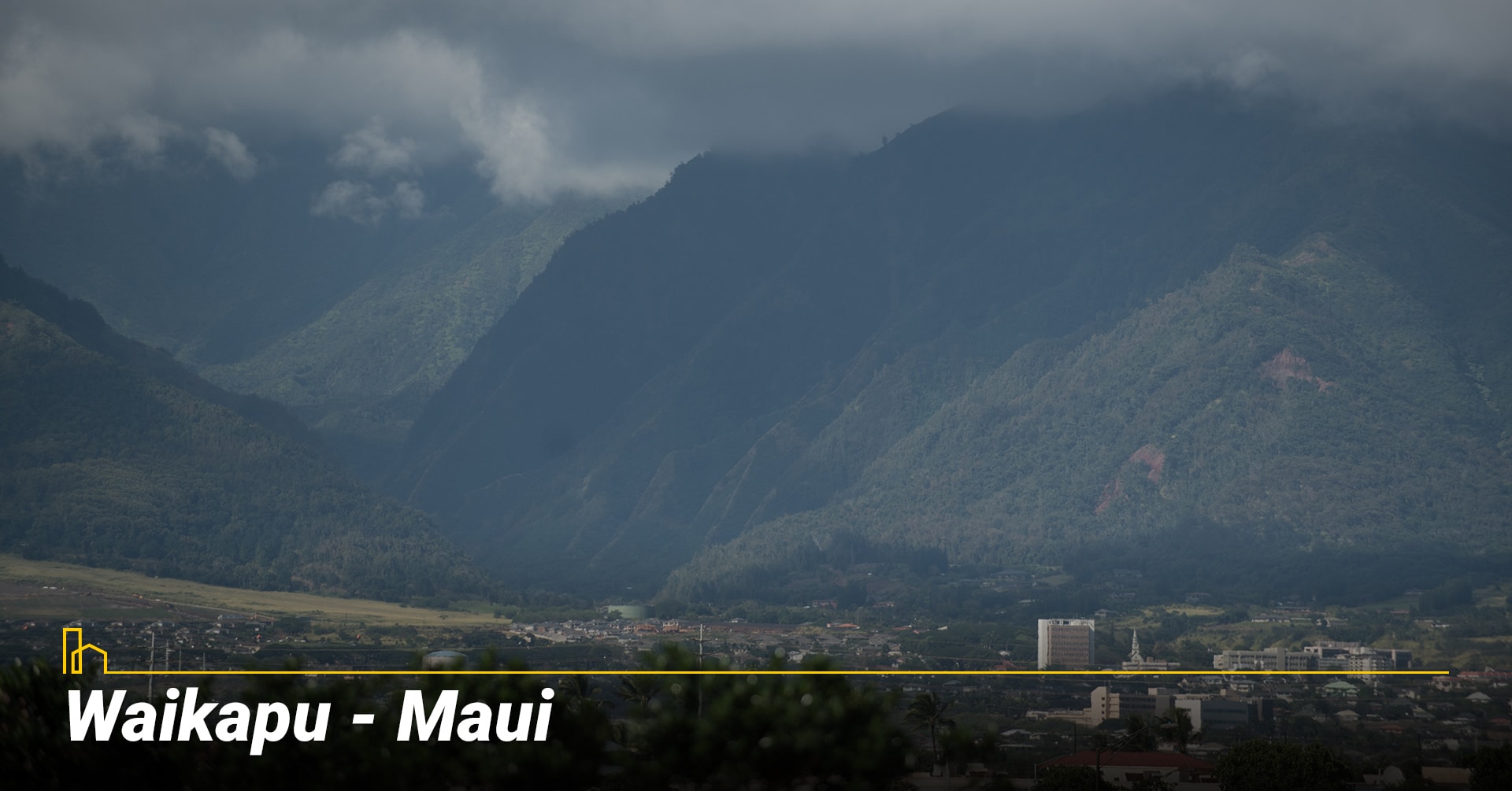
- Population: 3,887
- Median Household Income: $117,500
- Median Home Value: $751,800
Waikapu is another small city on the island of Maui. Its central location makes it a convenient drive to other island areas. The small population of 3,887 means families can embed themselves into a tight-knit community.
As with all of our choices for families, Waikapu is very safe. Crime is 54% lower than the Hawaii average, and real estate prices are slightly below average for all the islands. Houses cost an average of $751,800. Even the cost of living in Waikapu is marginally lower by Hawaiian standards, by about 3%. These savings won’t affect the outstanding quality of life that residents enjoy here.
Waikapu was known for sugar production upon its founding, drawing plantation workers from around the world to build the area’s economic foundation. Today, the town takes care of its own by maintaining pedestrian-friendly streets dotted with serene public gardens and an easily accessible town square for all shopping and commercial needs.
The Cost of Living in California vs Texas in 2023
Both California and Texas have not only the largest populations but the largest habitable landmass of any of the U.S. states. This means there are not a lot of statements that can be made which represent either state in totality. We’ll let you know here the general cost factors to consider when making a decision to relocate to either state…
9. Kapaa – Kauai
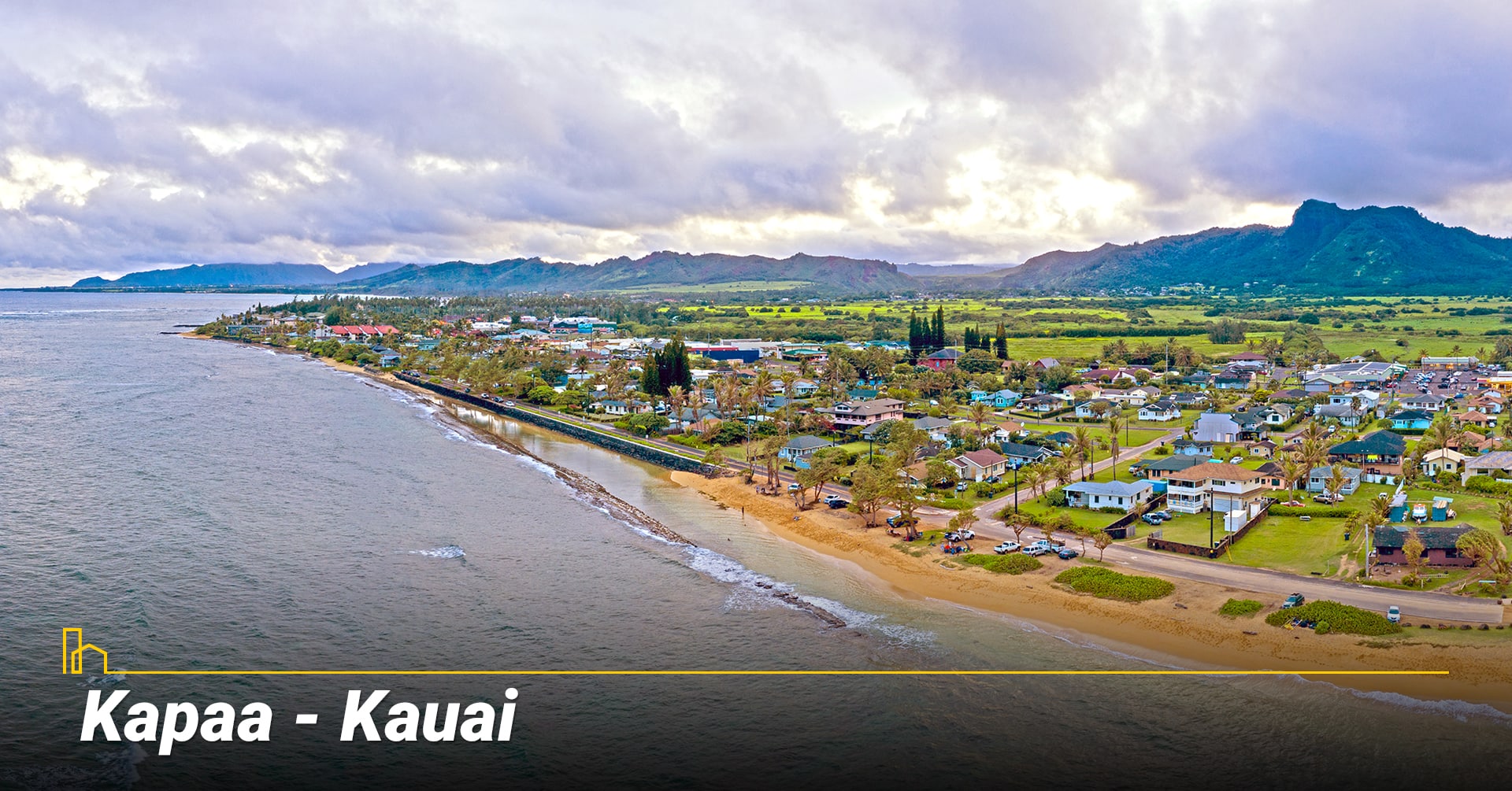
- Population: 10,846
- Median Household Income: $87,895
- Median Home Value: $691,400
Hawaii families looking to cut down on the cost of living can keep Kapaa in mind as an option. The cost of living is 7% lower here than the rest of the island in this town, of 10,846. Kapa’a is the most populous town on the island of Kauai.
Kapaa’s crime rate is on-par with the rest of Hawaii, meaning it’s a safer place than most in the rest of the country. The median home costs $691,400, making it slightly less expensive than the average of its counterparts on this list. Rental costs are also 11% lower, so living here is a penny-pinching family’s dream.
Kapaa is known for great shopping, highlighted by the Kinipopo shopping area. There are plenty of shops for souvenirs, water rentals, restaurants, and anything else people need. For Kauai living, Kapaa is an excellent choice.
The 10 Best Places to Live in Southern California
HOMEiA is here to help you explore ten of the best places to live in Southern California. Each place has its own charm and unique qualities. Let’s take a quick dive into what Southern California has to offer! Here’re 10 best places to live in Southern California…
10. Kailua – Oahu
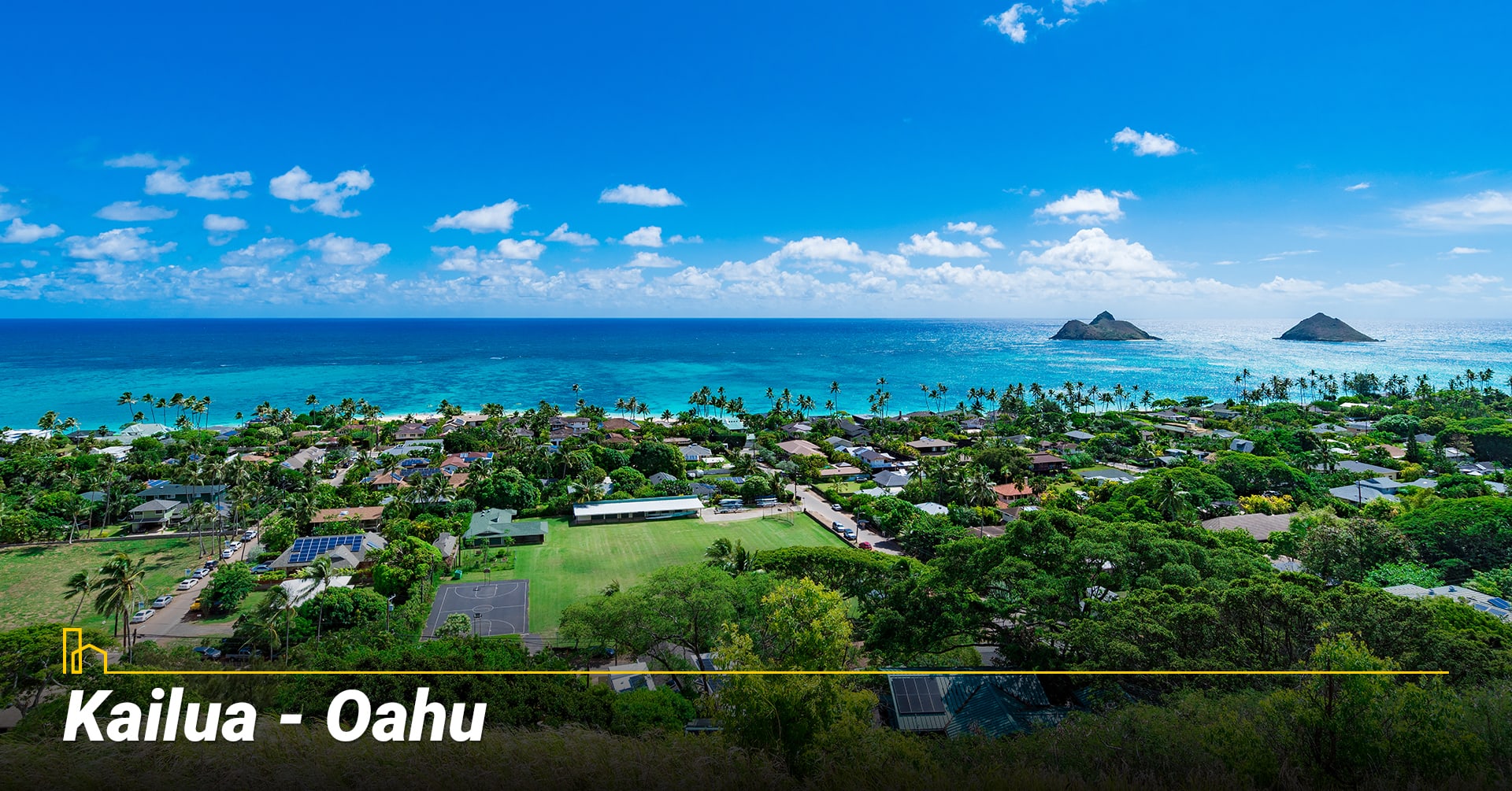
- Population: 40,323
- Median Household Income: $138,363
- Median Home Value: $1,208,600
“Shop, dine, explore” is the motto of this beautiful city with a population of 40,323. Kailua is a suburb of Honolulu, so it represents another appropriate choice for families who like to be closer to the action of an urban area. Many tourists tend to come here, so keep that in mind when considering a place to live.
Kailua is incredibly safe, with crime rates 55% lower than the Hawaiian average. There are highly-rated schools here for the children. But all of this makes it expensive. The cost of living is 22% higher overall than the rest of the state, and the median home will cost over $1.2 million.
Some of the most scenic beaches are in Kailua. There are plenty of tourist attractions, but they will satisfy permanent residents. There is no shortage of shopping or dining for fun and many nightlife options.
Frequently Asked Questions When Living in Hawaii
Living in Hawaii presents a unique set of circumstances and considerations that can lead to a variety of frequently asked questions (FAQs) from newcomers and residents. Here are some common questions people might have when living in Hawaii:
What are the pros and cons when living in Hawaii?
Living in Hawaii comes with a unique set of pros and cons that are important to consider before making the decision to move there. Keep in mind that individual experiences can vary, but here are some general pros and cons of living in Hawaii:
Pros:
Natural Beauty: Hawaii is renowned for its stunning landscapes, including beautiful beaches, lush rainforests, and breathtaking volcanoes. The natural beauty offers plenty of opportunities for outdoor activities like hiking, surfing, and snorkeling.
Mild Climate: Hawaii enjoys a year-round tropical climate, which means you’ll experience warm temperatures and generally pleasant weather throughout the year. However, different parts of the islands may have microclimates, so weather can vary.
Cultural Diversity: Hawaii is a melting pot of cultures, and you’ll find a rich mix of traditions, languages, and cuisines. This diversity can provide a unique cultural experience.
Aloha Spirit: The local culture embraces the “Aloha spirit,” which values kindness, hospitality, and a sense of community. This can create a warm and welcoming atmosphere.
Outdoor Lifestyle: The abundance of outdoor activities, such as surfing, snorkeling, hiking, and swimming, encourages an active and healthy lifestyle.
Tourism Opportunities: If you’re in the hospitality or tourism industry, Hawaii’s thriving tourism sector can provide job opportunities.
Cons:
High Cost of Living: Hawaii consistently ranks among the most expensive places to live in the United States. Housing, groceries, and other essentials are considerably more expensive than the national average.
Isolation: Hawaii is far from the mainland U.S., which can result in higher transportation costs and longer travel times to visit family and friends elsewhere.
Limited Job Opportunities: While tourism-related jobs are available, finding employment in other industries might be challenging due to the islands’ limited job market.
Small Community: The small size of the islands can lead to a close-knit community, but it can also mean limited social opportunities and a potential feeling of isolation.
Volatility of Island Life: Living on an island can be unpredictable due to factors like weather events (hurricanes, tsunamis) and volcanic activity.
Tourist Season Impact: Depending on your perspective, the influx of tourists during peak seasons might be seen as a con, as it can lead to crowded attractions and higher costs.
Healthcare Access: While healthcare facilities exist, specialized medical care might be limited, requiring travel to the mainland for certain treatments.
Limited Space: Space is at a premium on the islands, which can lead to smaller living spaces and less room for expansion.
Ultimately, whether living in Hawaii is a good choice for you depends on your personal preferences, priorities, and adaptability. It’s recommended to visit the islands for an extended period if possible to get a sense of the lifestyle before making a long-term commitment.
Where do most foreigners live in Hawaii?
Foreigners in Hawaii, like locals, are spread throughout the various islands and communities. However, there are certain areas that tend to attract more expatriates due to factors such as job opportunities, lifestyle preferences, and cultural amenities. Some of the areas that are popular among foreigners in Hawaii include:
Honolulu, Oahu: As the capital and largest city of Hawaii, Honolulu is a major hub for business, tourism, and education. It attracts a diverse population, including a significant number of foreigners. Waikiki, a neighborhood in Honolulu, is particularly popular among tourists and expatriates.
Wailea and Kihei, Maui: These areas on the island of Maui are known for their beautiful beaches, luxury resorts, and vibrant expat communities. Maui’s slower pace of life and natural beauty appeal to many foreigners.
Kailua-Kona and Waikoloa, Big Island: The Big Island of Hawaii has a range of communities, and places like Kailua-Kona and Waikoloa offer a mix of amenities, beautiful landscapes, and expat-friendly environments.
Princeville and Kapa’a, Kauai: Kauai’s lush landscapes and laid-back atmosphere make it a popular choice for expatriates seeking a quieter island lifestyle. Princeville and Kapa’a are known for their expat communities.
Lahaina, Maui: Lahaina’s historic charm, lively arts scene, and oceanfront location make it an attractive destination for both tourists and expatriates.
Kahala and Hawaii Kai, Oahu: These upscale neighborhoods on Oahu are known for their luxurious properties and amenities, making them popular among expatriates seeking a more exclusive lifestyle.
It’s important to note that the preferences of foreigners can vary widely, and some may choose to live in more remote or less touristy areas to experience a more authentic island life. Additionally, many foreigners live in areas that are convenient for their work, whether it’s in tourism, education, healthcare, or other industries.
What’s the cost of living like in Hawaii?
Is it expensive to live in hawaii? The answer is Yes! The cost of living in Hawaii is among the highest in the United States, and it can vary depending on the island and specific location within the state. Here are some key factors that contribute to the high cost of living in Hawaii:
Housing Costs: Housing is one of the most significant expenses in Hawaii. Rental prices and property values are considerably higher than the national average. Honolulu, the state capital on the island of Oahu, tends to have the highest housing costs.
Groceries: Hawaii imports many of its goods, which leads to higher prices for groceries and everyday items compared to the mainland. This is often referred to as the “paradise tax.”
Utilities: Electricity and water costs can be higher due to the state’s reliance on imported fuel for power generation.
Transportation: Gasoline prices are typically higher in Hawaii, and if you need to ship a car to the islands, there can be additional costs.
Healthcare: While healthcare facilities are available, healthcare costs can be high, especially for specialized or non-emergency medical care.
Education: Private schools and some aspects of public education can be more expensive than on the mainland.
Entertainment and Dining: While there are many entertainment and dining options, they can also be pricey, especially in tourist-heavy areas.
Insurance: Home insurance, particularly for properties in hurricane-prone areas, can be more expensive. Additionally, auto insurance rates can be higher due to the risk of accidents on island roads.
It’s important to note that wages and job salaries in Hawaii are often adjusted to compensate for the higher cost of living, but this may not fully offset the increased expenses. To manage the cost of living in Hawaii effectively, residents often employ strategies like budgeting carefully, taking advantage of local discounts and deals, and exploring cost-effective housing options.
How do I find housing in Hawaii, and what are the rental prices?
Finding housing in Hawaii can be competitive due to the high demand and limited availability, particularly in popular areas. Here are 8 key steps and tips for finding housing in Hawaii:
1. Research: Start by researching the different islands and neighborhoods within those islands to find areas that align with your preferences and budget. Consider factors like proximity to work, amenities, safety, and accessibility.
2. Online Listings: Utilize online platforms like Craigslist, Zillow, Apartments.com, and local real estate websites to search for available rental properties. These platforms allow you to filter results based on your preferences.
3. Local Newspapers and Bulletin Boards: Some landlords still advertise vacancies through local newspapers, community bulletin boards, and even social media groups. These sources can provide leads on rental properties.
4. Real Estate Agents: Consider working with a local real estate agent who specializes in rentals. They can help you navigate the rental market and provide insights into available properties.
5. Networking: Connect with locals or expatriates who are familiar with the area. They might have leads on available rentals or be able to provide advice on where to look.
6. Property Management Companies: Some rental properties are managed by property management companies. These companies can provide information about available units and guide you through the application process.
7. Visit in Person: If possible, visit the area in person before committing to a rental. This allows you to get a feel for the neighborhood, amenities, and overall suitability.
8. Be Prepared: Rental properties can go quickly, so be prepared to act promptly if you find a suitable option. Have your application materials ready, including references, proof of income, and a security deposit.
Rental Prices:
Rental prices in Hawaii can vary widely depending on factors such as location, size of the property, and amenities. As of my last update in September 2021, here’s a rough estimate of rental prices for different islands:
Oahu: Rental prices in Honolulu and surrounding areas (like Waikiki) are generally higher due to the urban setting and demand. On average, you might find one-bedroom apartments starting around $1,500 to $2,500 per month.
Maui: Maui’s rental prices can also be high, with one-bedroom apartments ranging from $1,200 to $2,500 or more per month.
Big Island: Rental prices on the Big Island are relatively more affordable compared to Oahu and Maui. One-bedroom apartments might start around $800 to $1,500 per month.
Kauai: Rental prices on Kauai are similar to those on Maui. One-bedroom apartments might start around $1,200 to $2,500 per month.
Keep in mind that these are general estimates, and actual rental prices can vary significantly based on location, condition, and current market conditions. It’s crucial to do thorough research and directly contact landlords or property management companies to get accurate and up-to-date information on rental prices.
What’s the weather like year-round in Hawaii?
Hawaii enjoys a tropical climate that is generally mild and pleasant year-round. However, the weather can vary based on the specific island, elevation, and time of year. Here’s an overview of the weather you can expect in Hawaii throughout the year:
Temperature: The temperature in Hawaii tends to stay relatively consistent, with coastal areas experiencing average high temperatures ranging from the mid-70s to mid-80s Fahrenheit (24-30°C) during most of the year. The temperature fluctuation between summer and winter is minimal compared to many other places.
Rainfall: Hawaii’s weather is influenced by trade winds, which bring moisture-laden air from the ocean. This leads to a significant amount of rainfall, especially on windward (northeastern) sides of the islands. Rainfall can vary considerably depending on the island, region, and elevation. Windward areas can receive heavy rainfall, while leeward (southwestern) areas tend to be drier and sunnier.
Seasonal Changes in Hawaii:
Summer (May to October): During the summer months, temperatures are slightly warmer, and there’s less rainfall in many regions. However, tropical rain showers can still occur, particularly in the afternoons.
Winter (November to April): Winter brings slightly cooler temperatures and a higher chance of rainfall, particularly on the windward sides of the islands. The ocean swells are generally larger during this time, making it a popular season for surfers.
Microclimates: Hawaii’s diverse geography, including mountains and valleys, leads to microclimates within each island. This means that the weather can change significantly over short distances. For example, while it might be rainy and cool on one side of an island, the other side could be sunny and warm.
Trade Winds: The trade winds play a significant role in Hawaii’s weather. These consistent breezes help keep the islands comfortable by moderating temperatures and bringing moisture. They are more prominent in the summer months, and their absence can lead to warmer and more humid conditions.
Volcanic Activity: The Big Island of Hawaii is home to active volcanoes, which can influence local weather patterns. Volcanic activity can lead to vog (volcanic smog) in certain areas, affecting air quality.
In summary, Hawaii’s weather is generally mild and enjoyable year-round, with variations based on location, elevation, and season. It’s important to pack a variety of clothing, including lightweight and breathable fabrics, as well as rain gear, regardless of the time of year you visit or live in Hawaii.
Conclusion:
While Hawaii may be more expensive to live in than most other states, the locals will tell you that the costs are more than enough to pay for all the perks. Everyone is aware of the natural landscape and stunning ocean views. Still, the island’s rich history, along with a bustling and exciting tourism industry, means there’s never-ending excitement in this tropical haven. Families who thrive on such excitement won’t regret moving to Hawaii.
12 Best Cities to Live in Arizona for Families
We took 4 main variables into consideration to determine the best places in Arizona to raise a family. The variables are quality of education, health care, personal safety, and recreational opportunities. Here you’ll find our list, along with the highlights that make each Arizona locale a special place to raise a family…

